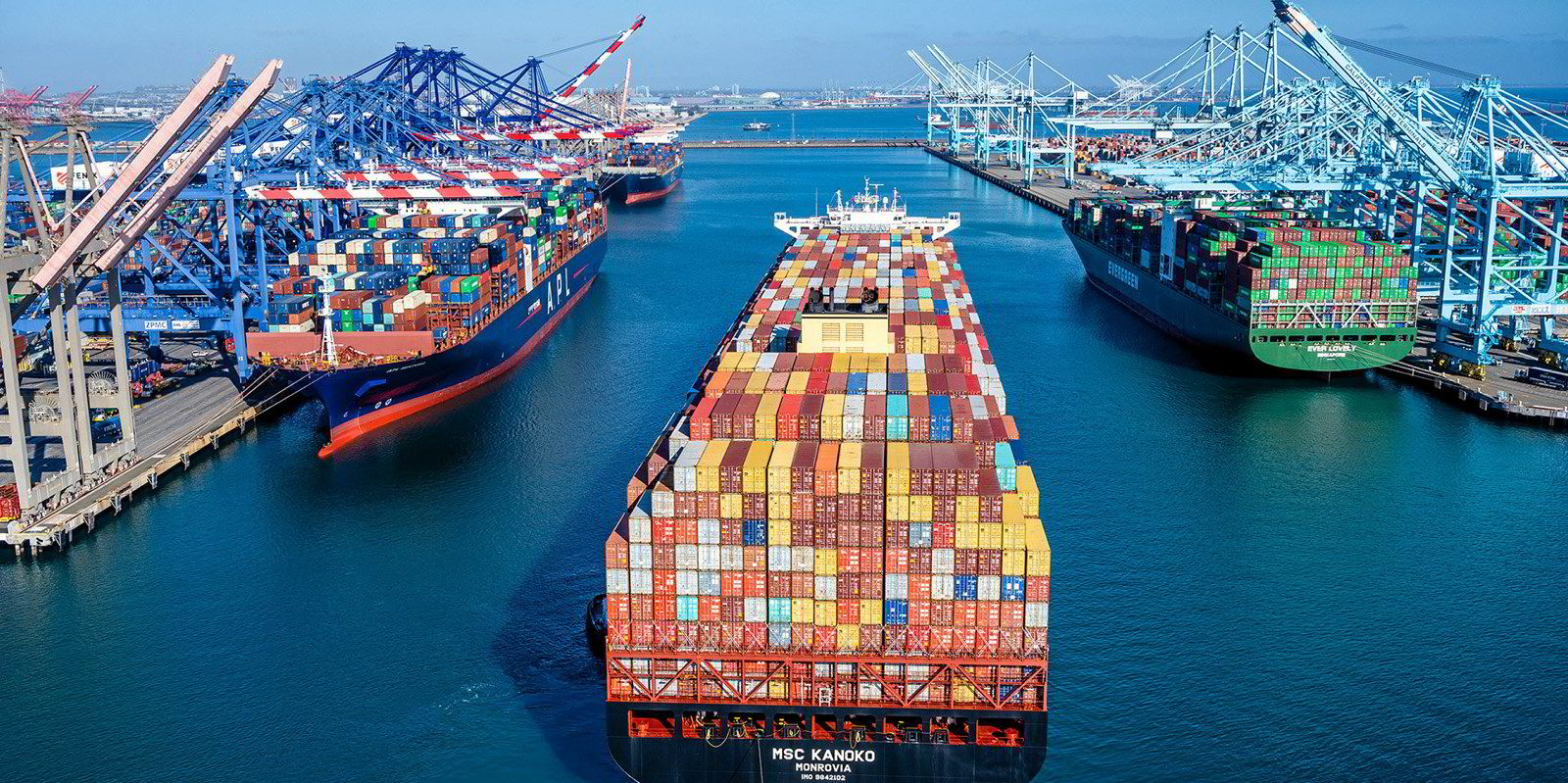A study has found that bringing zero-emissions container shipping to a green corridor between China and California in 2030 could add $90 to $450 to the cost of moving each 20-foot container.
That in turn could lead to an increase of 17% to 50% in freight rates on 15,000-teu ships, according to a team of researchers at consultancy UMAS who are also academics at University College London’s UCL Energy Institute.
Lead author Camilo Perico, a data analysis-focused consultant at UMAS and UCL, and his colleagues carried out the research to tally up the costs on container shipping routes that are targeted as green corridors.
Emerging from the United Nations COP26 climate conference two years ago in Glasgow, green corridors serve as the front lines of shipping’s decarbonisation, where first movers deploy zero-emissions fuels on specific trades.
In addition to assessing the cost on the transpacific route, connecting the California ports of Los Angeles and Long Beach with Shanghai, UMAS calculated that container ships on the Chinese coastal trade would see costs for zero-emissions shipping of between $30 to $70 per teu. That translates to 9% to 17% in additional freight rates.
“The fuel cost gap is now acknowledged as the main blocker for shipping’s transition and tackling it requires a frank conversation about the dimension of the challenge,” Perico said. “We need ‘numbers on the table’ and more visibility on how stakeholders can help to cover.”
The study was funded by the ClimateWorks Foundation and Quadrature Climate Foundation.
Its estimates do not factor in potential subsidies for green fuels, which could be considerable in the US, where the Inflation Reduction Act and other legislation have injected cash into production.
Published during the COP28 climate conference in Dubai, the study found that the price of fuel production, rather than the capital expenditures involved in building ships and infrastructure, is the most prominent feature of the cost.
Nishatabbas Rehmatulla, a principal consultant at UMAS and a co-author of the report, said fuel production is a major component of the costs of operating a zero-emissions ship.

For the transpacific route alone, the figures translate to additional spending of $20m to $30m per ship per year, of which $18m to $27m is fuel costs.
“What we’ve shown is that if you go for different pathways, you can get a better return or a lower … fuel cost. So for example, in our study we see that green ammonia is the most cost-effective way if we exclude bio-methanol,” Rehmatulla told TradeWinds.
The UMAS researchers found that green ammonia would cost $150 to $350 per teu on the transpacific route, compared with $210 to $450 per teu for green methanol, which comes either in the form of bio-methanol made from organic waste or e-methanol made renewable electricity.
While the lower capital expense of, for example, bio-methanol may be appealing for shipping in the short term, Perico said the research found that fuel cost savings have a bigger impact on long-term cost savings.
The researchers described bio-methanol as a non-scalable fuel because it will become more expensive over time as demand outstrips supply.
“We are already seeing a situation of very heated competition for feedstock,” Perico told TradeWinds.
The good news is that policies that can close the cost gap for green fuels are already coming into play, with the Inflation Reduction Act and European Union Emissions Trading System serving as two major examples.

And the estimated costs are relatively small for end-users. Rehmatulla said the additional costs for shipping a pair of shoes can be calculated in pennies.
“It’s not a significant cost increase in terms of the commodity that you are shipping, although it may look high on a per-container basis,” he said.
And he said the significant elasticity of the container freight market during the pandemic shows that cargo owners are willing to pay that much.
“With the right demand signals and corporate action during the emergence phase, production and supply of zero-emission fuels and freight services can make a head start in lowering the cost gap that this work has shown,” he said.



